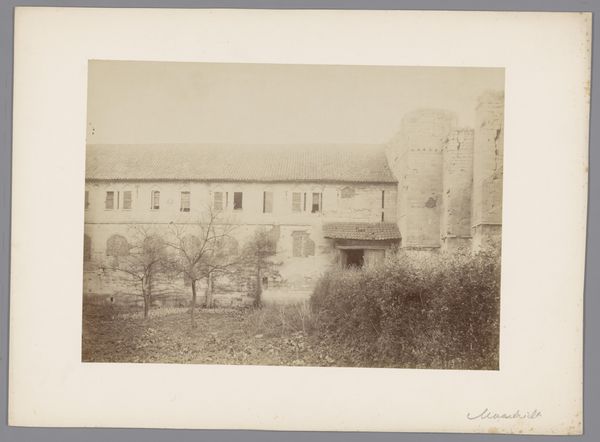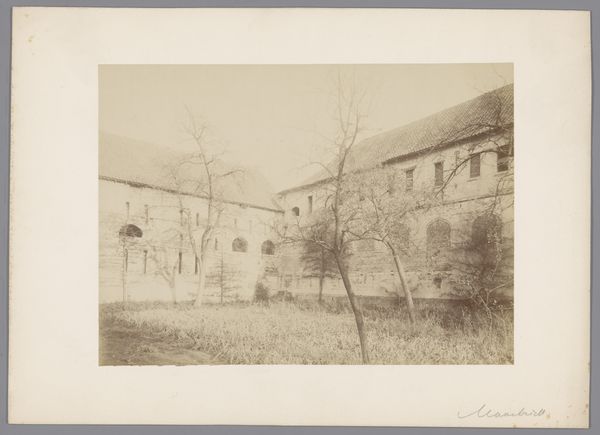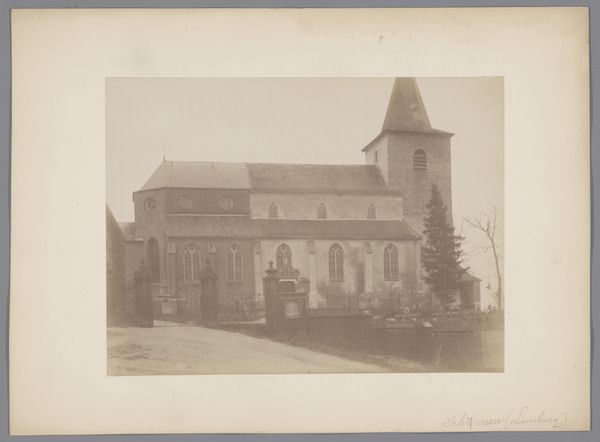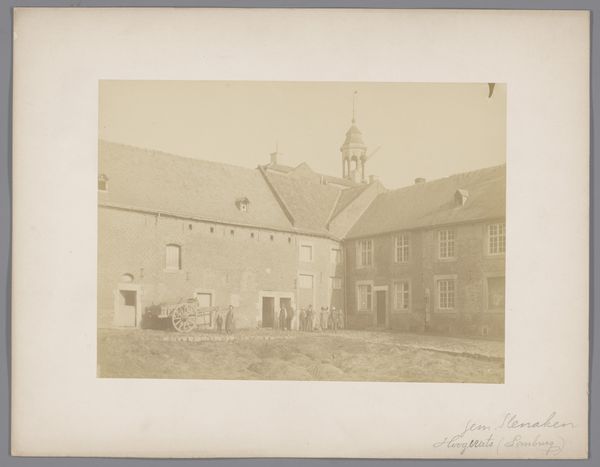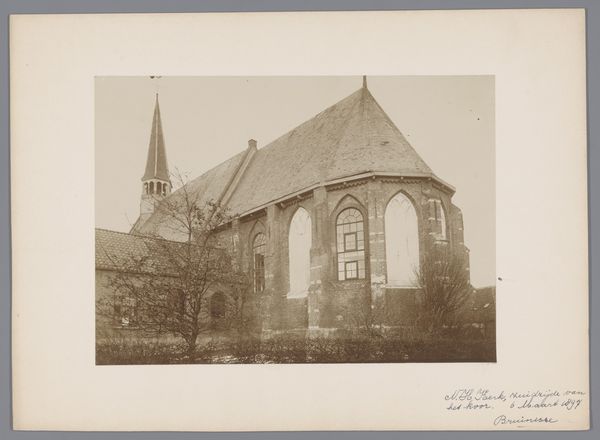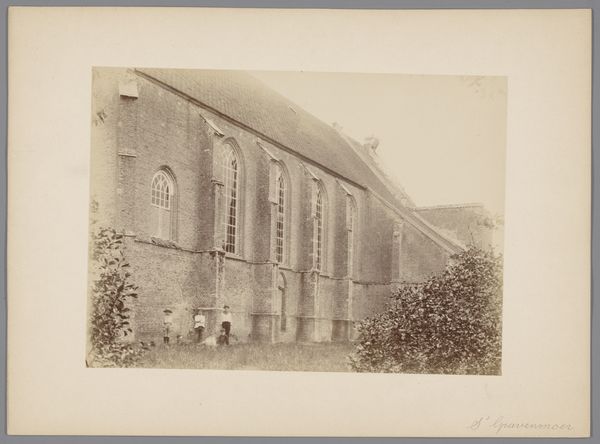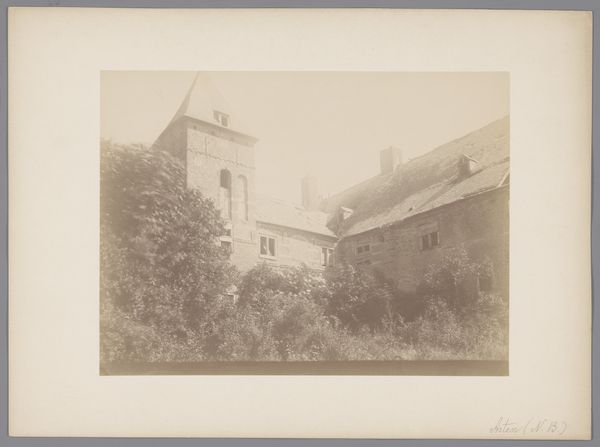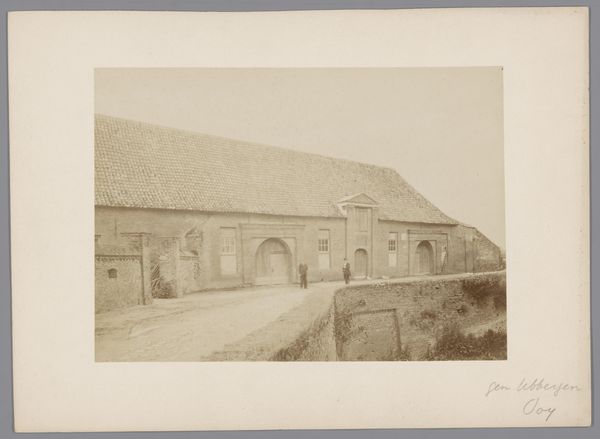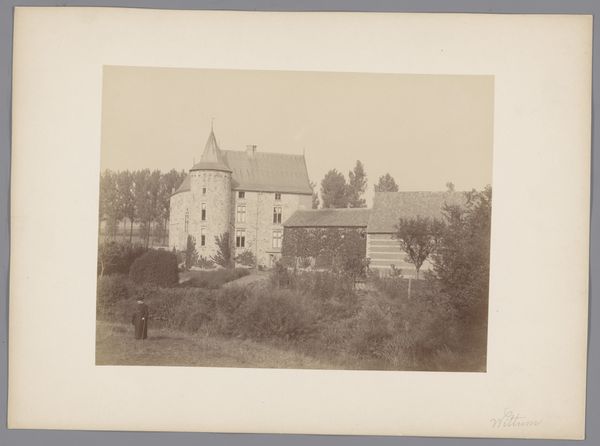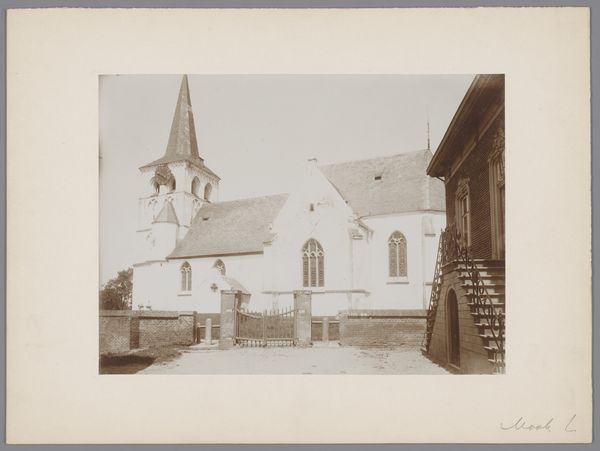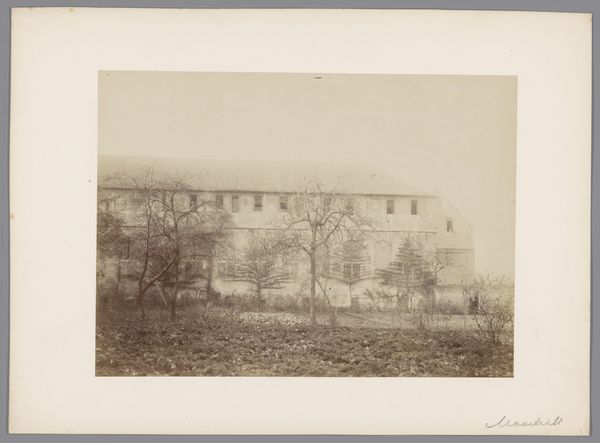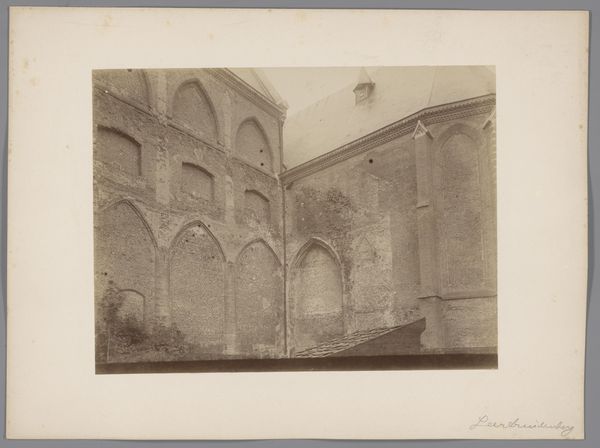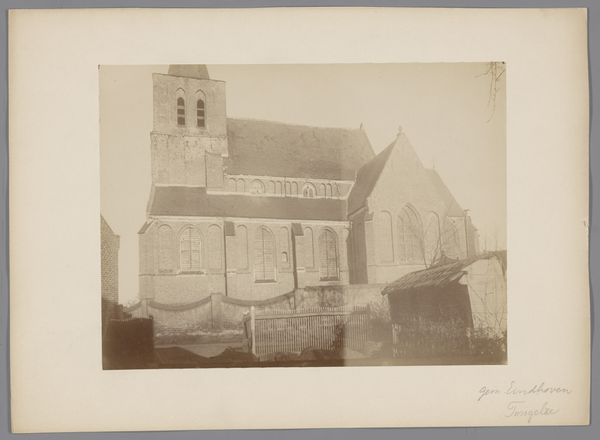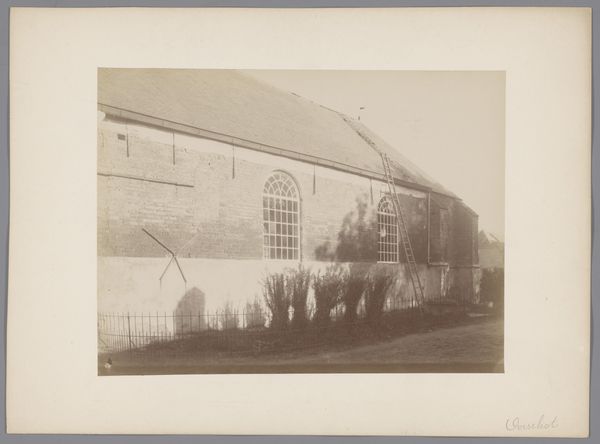
Dimensions: height 169 mm, width 228 mm
Copyright: Rijks Museum: Open Domain
Curator: This intriguing vintage print shows a portion of the old Beyart monastery in Maastricht, dating back to 1893, and the image's neutral tones give the scene an austere character, don't you think? Editor: Indeed. The muted sepia tones contribute to a somber feel. There is also something very rigid about the linear composition of the long rectangular wall that really focuses the gaze. The image hints at confinement, but with the bare trees almost concealing sections of the facade, the structure doesn't quite reveal its secrets, either. Curator: Right, let's unpack some of that secrecy. Monasteries, of course, historically represent a separation from the world, a space of imposed and chosen seclusion often entwined with notions of service, labor, class, and enforced gender roles. What does it mean to picture this structure at a specific point in history, as social roles and political upheavals challenge older power structures? How might we frame the relationship between religion and marginalization within the context of the late 19th century? Editor: Intriguing questions. From a more structuralist standpoint, consider the stark contrast between the rough texture of the monastery walls and the comparative smoothness of the foreground landscape. It creates a palpable sense of spatial depth, with the building serving almost as a barrier. There's also the use of light and shadow; see how it plays across the surfaces to emphasize the building's geometric form? It really does compel the viewer to decipher the material logic embedded within. Curator: Precisely, and consider that "logic" was historically defined by male ecclesiastics. What if we disrupt that assumed perspective and instead centre women? The lives and identities that were forged, suppressed, and negotiated within that very structure? These physical spaces served to define, embody and control women's spiritual lives in ways that linger into our present. Editor: A powerful point, to re-centre how the cultural space of the monastery reflects and refracts patriarchal control. By shifting our perspective, what was once mere facade now seems to vibrate with a hidden history, both of enforced closure and possible secret freedoms. Curator: Indeed. Reframing our visual encounters allows us to unearth these silent power dynamics and broaden our awareness of hidden social textures within ostensibly "historical" places. Editor: I agree. The discussion today helped bring new context, especially social context, to my strictly formal interpretations. I appreciate how a combined strategy brought out new layers and depths within the photograph.
Comments
No comments
Be the first to comment and join the conversation on the ultimate creative platform.
